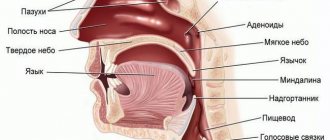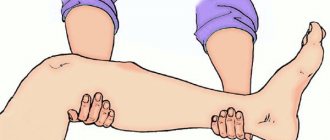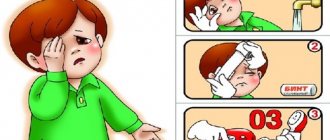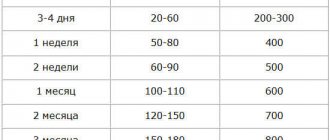Emergency care for bronchial asthma in children should be prompt and effective. Timely measures will help prevent serious health problems and even save the child’s life.
An attack of asthma is asphyxia, which develops acutely. Whistling sounds may be heard. At risk for the possibility of an unfavorable outcome of the disease are patients who often have relapses, panic attacks, diabetes or epilepsy, and a low level of quality of life.
It is not uncommon for an attack to progress to status asthmaticus, a life-threatening condition. Sensitivity to medications is sharply reduced. This status is acquired in stages.
- A dry cough occurs, breathing becomes more frequent, and wheezing occurs. A feeling of anxiety appears. There is a blue tint near the lips.
- There is a sharp loss of strength: there is no strength to eat or drink. Loud wheezing is noted, breathing becomes even more rapid, and the chest rises sluggishly.
- Loss of consciousness occurs, convulsions occur, and coma may occur.
Attention! In order to improve your well-being, you must strictly follow your doctor’s recommendations. Treatment should be supervised by adults.
What can trigger an attack?
Most often, poor living conditions, poor ecology, air and water pollution, and allergens cause exacerbation of bronchial asthma. Indeed, in this case, there is an increase in the susceptibility of the bronchi.
It is constant contact with allergens that can cause exacerbation of severe asthma.
Exacerbation of bronchial asthma can be triggered by dust, plant pollen, animal hair, pillow fluff, food, bad weather conditions and conflicts in the family.
Very often, doctors fail to identify the allergen that caused an exacerbation of bronchial asthma.
In addition to the above factors, the cause of irritation and spasms of the respiratory tract can be:
- respiratory infections;
- tobacco smoke;
- traffic fumes;
- the smell of soap, detergents, deodorants or air fresheners;
- taking medications that contain allergens for a specific child;
- pungent smell of perfume.
Very often, a reaction to any allergen may not appear immediately, but develop gradually.
Important! Most often, the cause of bronchial asthma is an allergy to a specific substance, for example, dust.
Depending on the causes of bronchial asthma, several types are distinguished, namely food asthma, aspirin asthma (which arose from medications), physical effort (when cold air enters the bronchi). There is also mixed (occurs under the influence of several factors) and unspecified bronchial asthma, the cause of which cannot be determined.
Bronchospastic syndrome in children and adults
This pathology does not have significant differences in children and adults, however, experts note that with bronchospasm in adults there is a lower risk of developing serious clinically significant complications or death.
This is due to the fact that in childhood the respiratory system, in particular the bronchial tree, is underdeveloped, which causes the formation of more severe bronchospastic attacks.
In children, the bronchial tree is underdeveloped, which causes more severe bronchospastic attacks.
Diseases in which bronchospasm may develop include:
- Chronical bronchitis;
- Bronchial asthma;
- Emphysematous lung disease.
Also, the development of bronchospasm can be caused by taking certain medications, for example, non-steroidal anti-inflammatory drugs or beta blockers.
It is very important to know the main factor in the development of this condition, since knowing the cause, you can take more effective therapeutic measures aimed at stopping a bronchospastic attack
How to understand that an asthma attack has begun?
Based on the severity of symptoms, there are three degrees of severity of an asthma attack: mild, moderate and severe. About half an hour before the condition worsens, certain signs may appear.
Before the onset of an allergic attack, the following is observed:
- coughing;
- constant sneezing;
- sore throat and nose;
- copious mucous discharge from the nose;
- headache.
If the attack is not provoked by the action of an allergen, but, for example, by excessive physical activity, a cough, dizziness, severe fatigue, anxiety and restlessness, rapid heartbeat and breathing may occur.
A night attack may be accompanied by a severe cough; children may find it difficult to sleep and suffer from insomnia.
During the attack itself, the following symptoms appear:
- shortness of breath, difficulty breathing, or suffocation;
- severe shortness of breath;
- feeling of compression and heaviness in the chest;
- cough;
- severe wheezing during breathing and coughing in the chest area.
Exacerbation of bronchial asthma in some cases may manifest itself in the form of hives or runny nose. Parents need to take immediate action when the first symptoms of an incipient asthma attack appear.
Stages and clinical manifestations of a bronchial attack
In order to correctly assess the patient’s condition and begin measures from the right moment, it is necessary to know the clinical manifestations and stages of bronchospasm.
| External manifestations | Description |
| Stage 1: bronchospasm is compensated. — The patient shows hyperactivity and is alarmed due to the development of suffocation. — Clinically manifested by pale skin, severe sweating. — The patient has difficulty speaking. | |
| Stage 2: increasing symptoms due to bronchial obstruction. The patient cannot speak, and the pulse increases significantly. | |
| Stage 3: decompensation occurs. — The patient is inhibited or there is no consciousness at all. - Breathing is rare and shallow, pulse is thready. |
A thread-like pulse is manifested by barely perceptible tactile sensations when counting it; sometimes the pulse may not be detected at all.
First aid
Very often, the lives of children may depend on the speed and skill of providing assistance, especially with a severe attack. Therefore, it is important for parents of children who suffer from asthma to know what to do before the ambulance arrives.
To provide assistance, parents must purchase and be able to use a nebulizer and aerosol inhaler, because this will help save the lives of their children.
Important! During an attack of moderate or severe severity, you should call a doctor, since emergency care will only help temporarily alleviate your health condition.
Emergency actions are as follows:
- Call an ambulance immediately (in case of a severe attack).
- Eliminate the allergen (if known).
- Ensure free breathing by unfastening your collar or removing clothing that is constricting your neck.
- Use an inhaler (if you have one). You can use it several times every 20 minutes. Bronchodilators such as Atrovent, Ventolin, Berotec are suitable for inhalation.
- Open a window to provide fresh air.
- Help the child take the correct position: sitting or standing, resting his hands on any surface. This stimulates respiratory activity.
- Calm the child and make sure he is breathing evenly.
You can stop a mild attack with a hot bath for your hands and feet.
At the time of an attack, the main thing is not for parents to panic, because this will make children worry and worsen the lack of air. In families where children suffer from bronchial asthma, there should always be bronchodilators in the medicine cabinet.
In case of moderate severity, before the ambulance arrives, the child needs to be administered Eufillin 2.4%, diluted with sodium chloride solution at a dose of 4-5 mg/kg, slowly intravenously over 10 minutes. If this is not possible, then at least you need to inhale Berodual in a double dose. Relief should occur within 20 minutes.
Important! Eufillin solution for children can only be used for intravenous administration.
During an attack, a large amount of fluid is lost. To prevent dehydration, the child should be constantly given water to drink in small portions.
Parents need to know that they need to act immediately during an attack of any severity. Getting help early will help minimize the chance of developing complications such as status asthmaticus, which can only be treated in a hospital.
To prevent complications of bronchial asthma in a child, parents need to constantly monitor his breathing.
In case of severe exacerbation of bronchial asthma at home, first aid before the doctor arrives is the same as for other degrees of severity.
Causes of asthma and signs of its onset
Bronchial asthma is a sharp spasm of the bronchial muscles, leading to suffocation and the inability to exhale calmly.
Asthma attack
It should be noted that by avoiding a number of dangerous and provoking factors, you can significantly reduce the possibility of bronchial asthma. These include:
- severe stress - nervous overstrain will affect bronchospasm, which will lead to an attack;
- various allergens, such as house dust or pollen, household chemicals, animal hair and perfumes. In food it is better to avoid fish, seafood, eggs;
- a respiratory infection will worsen the condition of already suffering bronchi;
- Low air temperature can provoke an attack of suffocation.
Knowledge of the signs of an approaching attack helps to react in a timely manner and provide emergency assistance during an attack of bronchial asthma, thereby preventing complications:
- the person begins to behave restlessly, feels emotional or physical excitement for no reason;
- difficult speech - words are pronounced with difficulty, sometimes it is impossible to understand them;
- pallor appears, and in more severe cases the skin acquires a bluish tint;
- breathing slows down, whistling sounds appear, the patient inhales and exhales noisily;
- very difficult exhalation when you have to put a lot of effort into it;
- wheezing – loud and whistling;
- cough with phlegm that comes in fits and starts;
- a person cannot lie down.
Signs can be divided into 3 degrees.
Mild degree
Wheezing when exhaling is observed, but moderate. The patient feels normal in a supine position, can walk, and increased emotional excitability can be observed. The heart rate drops below 100.
Average degree
High nervous excitability, it is difficult for a person to eat, he is forced to sit so as not to suffocate. Speech is difficult, shortness of breath is observed. The heart rate may jump to 120, and the patient makes loud wheezing sounds.
Severe degree
A person suffering from bronchial asthma is forced to take a sitting or standing position, the breathing rate per minute exceeds 30 inhalations and exhalations. It is impossible to speak clearly, severe shortness of breath even at rest, nervous agitation.
The most dangerous condition is status asthmaticus. A person begins a series of attacks: as soon as one ends, the next one begins without a break. The condition rapidly deteriorates, and the patient may even die from suffering due to severe suffocation.
Complications
Bronchial asthma is a dangerous disease that can lead to a number of complications. Atelectasis of the lung tissue is most common. This pathology in infants develops due to the fact that swelling of the bronchial mucosa is added to the narrow lumen (the norm in the first years of life). Atelectasis leads to the following complications:
If bronchial asthma is not treated, then in the future the child may have problems with the functioning of the lungs and heart. This respiratory tract disease is dangerous because an asthmatic attack can be prolonged or be particularly acute; in these cases, the health and even the life of the baby largely depends on the timely provision of assistance.
The occurrence of an allergic form of the disease in a baby
Children from newborns up to one year old develop an allergic form of asthma due to factors such as:
Symptoms of allergic asthma in infants:
Asthma in an infant at an early stage can easily be confused with a common cold.
If choking is caused by an infection, this can be understood by:
- Poor sleep and heavy breathing
- Wheezing in the lungs
- Dry, prolonged cough resembling bronchial cough
- By a wet cough and discharge of mucous sputum
When the baby is not yet six months old, the tonsils become enlarged and rare dry wheezing appears in the throat.
Medicines for bronchial asthma in children
Effective drugs for the treatment of bronchial asthma in children
Although bronchial asthma is a rather complex disease, with the right approach you can achieve quite good results. If you strictly follow all the doctor’s advice, then after some time your child will be able to live a normal life and even play sports. Of course, such results can only be achieved if the disease has not reached the chronic stage.
Therefore, if you notice even the slightest signs of asthma in your child, then immediately begin to take action. After all, if you do not stop the development of the disease at the initial stage, then it is likely that your child will have to live with it all his life.
The most effective means for the treatment of bronchial asthma in children: • Tailed. Can be used to treat patients with mild forms of the disease. But keep in mind that it cannot be taken simultaneously with Ambroxol • Budesonide. A glucocorticosteroid hormonal drug with fairly good anti-inflammatory properties. Most often used for inhalation • Metypred. Tabletted hormones that are taken during an exacerbation of the disease or attack• Formoterol. Quite quickly expands the lumens in the bronchi and thereby normalizes the breathing of a small person • Lazolvan. It thins mucus as quickly as possible and stimulates its release
Diagnostics
Nowadays, doctors know how to diagnose a patient's asthma in a short time and ensure timely initiation of treatment.
- General examination of the patient, history taking, palpation, percussion (tapping) and auscultation (listening) are classic methods that allow you to obtain a lot of useful information about the patient and his condition without resorting to instrumental and laboratory diagnostics. A doctor who does not neglect them will always prescribe only the necessary diagnostic procedures and make a diagnosis as quickly as possible.
- Study of the function of external respiration - doctors determine the value of various indicators and, based on the data obtained, draw conclusions about the degree of impairment of this function. Spirometry – allows you to assess the severity of bronchial obstruction. Functional vital capacity and forced expiratory volume are the most important indicators in assessing the severity of asthma.
- Peak flowmetry – the rate of exhalation is determined, which allows you to assess the body’s capabilities and quickly obtain information about the effectiveness of the treatment.
- Determination of immunoglobulins in blood serum. Some of them (type E) increase in allergic pathology and can provide information about the degree of increased sensitivity of the body.
Also, if necessary, all methods are used to exclude other pathologies during differential diagnosis. For example: chest x-ray plays virtually no role in the diagnosis of asthma, but can exclude other pathologies.
If a child is diagnosed with asthma, it is necessary to carefully monitor the correctness of his actions. Otherwise, the results will be incorrect and will mislead specialists.
Complications
Most often, against the background of a previous illness, infants may develop pulmonary atelectasis - this is a decline and adhesion of the pulmonary vesicles. The lungs reach this state due to the lack of air in the tissues. The lack of air is due to the fact that swelling of the bronchi is added to the still narrow lumen of the newborn.
Atelectasis, in turn, leads to bronchiectasis - severe dilatation of the bronchi, due to damage to the bronchial wall and pneumosclerosis - replacement of lung tissue with connective tissue. The proliferation of connective tissue deforms the bronchi, sharply compacts and wrinkles the lung tissue. There is no air entering the lungs and they shrink.
If you do not provide timely assistance to your newborn, he may have heart problems.
Causes of asthma in young children
According to recent medical research, it has been established that a number of factors are involved in the development of bronchial asthma:
- Genetics. The genetic connection between the incidence of asthma has long been established, although scientists have not yet identified individual genes that affect the inheritance of bronchial asthma.
- Allergies/provocateurs. For children, inhalation of allergens is the main cause of asthma. In this case, the provocateur of an allergic reaction can be dust, household chemicals, perfume, cold air, etc.
- Child development. In infants, the immune system is quite fragile. The reasons for the development of asthma can also be underdevelopment of the respiratory organs, improper development and increase in lung volume, underdevelopment of the lungs, etc. Due to such phenomena, children are more susceptible to respiratory infections, which in turn increase the risk of developing bronchial asthma.
- Poor nutrition and gastrointestinal diseases.
IMPORTANT! Newborn babies are prone to allergies to mold and mold fungi contained in fermented milk products.
If parents cannot influence the first group of factors in the development of the disease, then they are simply obliged to monitor the cleanliness of the house, the development, quality of life and nutrition of the newborn. If there is a suspicion of an allergy or a developmental disorder in the child, parents should definitely contact their pediatrician.
Causes of disease in infants
Allergens - wool, dust, synthetic materials, and some food products - can trigger bronchial asthma. In winter, the disease can be caused by a previous infection. Children with weakened immune systems and diseases of the endocrine system are at risk.
The disease manifests itself as a result of poor nutrition, disruption of the gastrointestinal tract, and an underdeveloped respiratory system. The disease is often transmitted by infants born prematurely.
Forms of the disease
The following forms of bronchial asthma are distinguished according to severity:
- Intermitting – occurs approximately once a week, with nocturnal exacerbation up to three times a month.
- Mild persistent - frequent attacks of suffocation - three to four times a week. At night it appears up to three times a month.
- Persistent moderate severity - bronchial disease in infants. Characterized by daily attacks, sometimes several times during the day. Choking attacks occur every three to four days. The child develops tearfulness, lack of sleep and irritation.
- A severe stage with daily attacks of suffocation several times a day and every night. The baby is tired, moves little and does not get enough sleep.
At any stage, there may come a time when the disease reaches its peak and emergency medical attention is required to avoid the consequences of oxygen deprivation.
Preventive measures
Pediatricians recommend preventive measures for asthma in infants:
- Extending breastfeeding up to a year.
- Smooth transition from mother's milk to complementary foods.
- Removing pets and anything that collects dust (carpets of books) from the child’s room.
- Constantly carrying out wet cleaning without using household chemicals.
- Increasing immunity (taking vitamins, including fruits and vegetables in the diet, constant walks in the fresh air).
If it is not possible to accommodate a pet, try to ensure that the baby has as little contact with it as possible. A combination of drug treatment and prevention, together with parental care, will help the child recover faster. Asthma in infants is completely curable if the problem is corrected in time.
source











